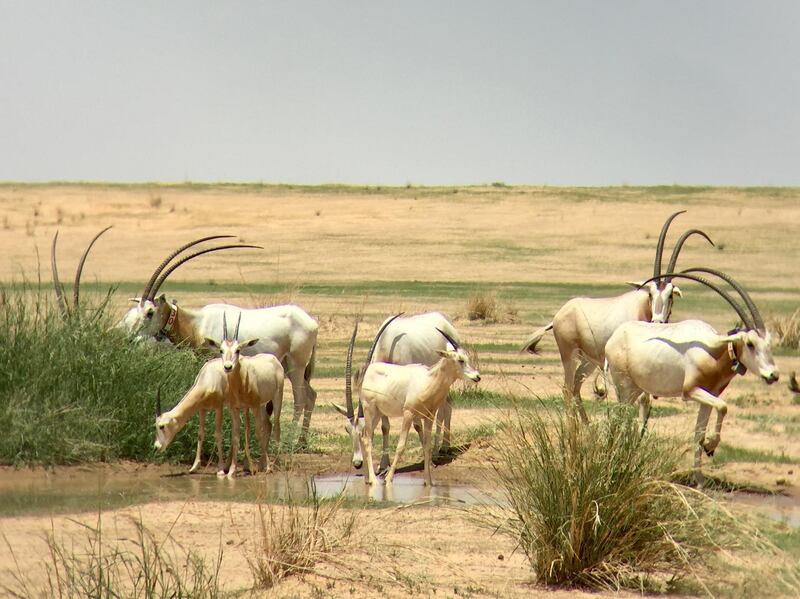A species of oryx that was once poached out of existence in the African country of Chad is on the comeback trail thanks to an Abu Dhabi-led conservation campaign.
Forty scimitar-horned oryx calves have been born in Chad - swelling the total herd to 180 - as part of an initiative which has been described as the “world’s most ambitious large mammal reintroduction programme.”
The scimitar-horned oryx reintroduction programme is being spearheaded by the Environment Agency-Abu Dhabi (EAD) in partnership with Chad and the Sahara Conservation Fund.
The EAD has led a series of conservation efforts in recent years, with the goal of establishing a self-sustaining herd of more than 500 animals over a five-year period.
Razan Al Mubarak, secretary general of Environment Agency – Abu Dhabi, says the success of the scheme has proved 'gratifying".
“The reintroduction of the scimitar-horned oryx into Chad has been described by many as the world’s most ambitious large mammal reintroduction programme,” she said.
“To see this initiative taking shape has to be one of the most gratifying experiences that anyone who is passionate about wildlife conservation could wish for.”
It is believed that the last scimitar-horned oryx disappeared from Chad in the late 1980s and the species was officially declared globally “extinct in the wild” by the International Union for the Conservation of Nature in 2000.
The birth of the calves in the Ouadi Rimé-Ouadi Achim Game Reserve follows the introduction of 83 scimitar-horned oryx in July. The animals came from the herd that EAD has been curating at its breeding facility in Delaija, Abu Dhabi.
Many of the animals that make up this herd were donated from the collection of the late UAE President, Sheikh Zayed.
Some of the oryx were fitted with collars which allow conservation experts to track them.
Shaikha Salem Al Dhaheri, executive director of the terrestrial and marine biodiversity sector at the EAD, says the calves are settling well in their new habitat.
“Our initial reports show the released animals appear to have gained good awareness of the area as they have been observed making efficient movements to and from the pre-release pens," she said.
"Natural calving behaviour is also being observed in the wild where the females separate from the group to give birth and then male/female pairs are temporarily formed.
“There has been about 40 millimetres of rain in the reserve so far this year which is hopefully the beginning of a good rainy season, where there will be plenty of grass growth to sustain the oryx through the year.”
Once widely found across the Sahel, from Senegal to Sudan, the oryx were hunted to extinction and killed during times of civil unrest in Chad and neighbouring regions. Climate change and habitat encroachment are key threats to the antelope.
By releasing the oryx into their native habitat during the rainy season when better resources are available, giving them time to acclimatise in a large fenced area and hiring rangers to patrol the reserve, EAD and its partners are hopeful that the animals will now have a better chance of survival.
_______________
Read more:
Abu Dhabi helps release largest number to date of 'extinct in wild' Scimitar-horned Oryx in Africa





